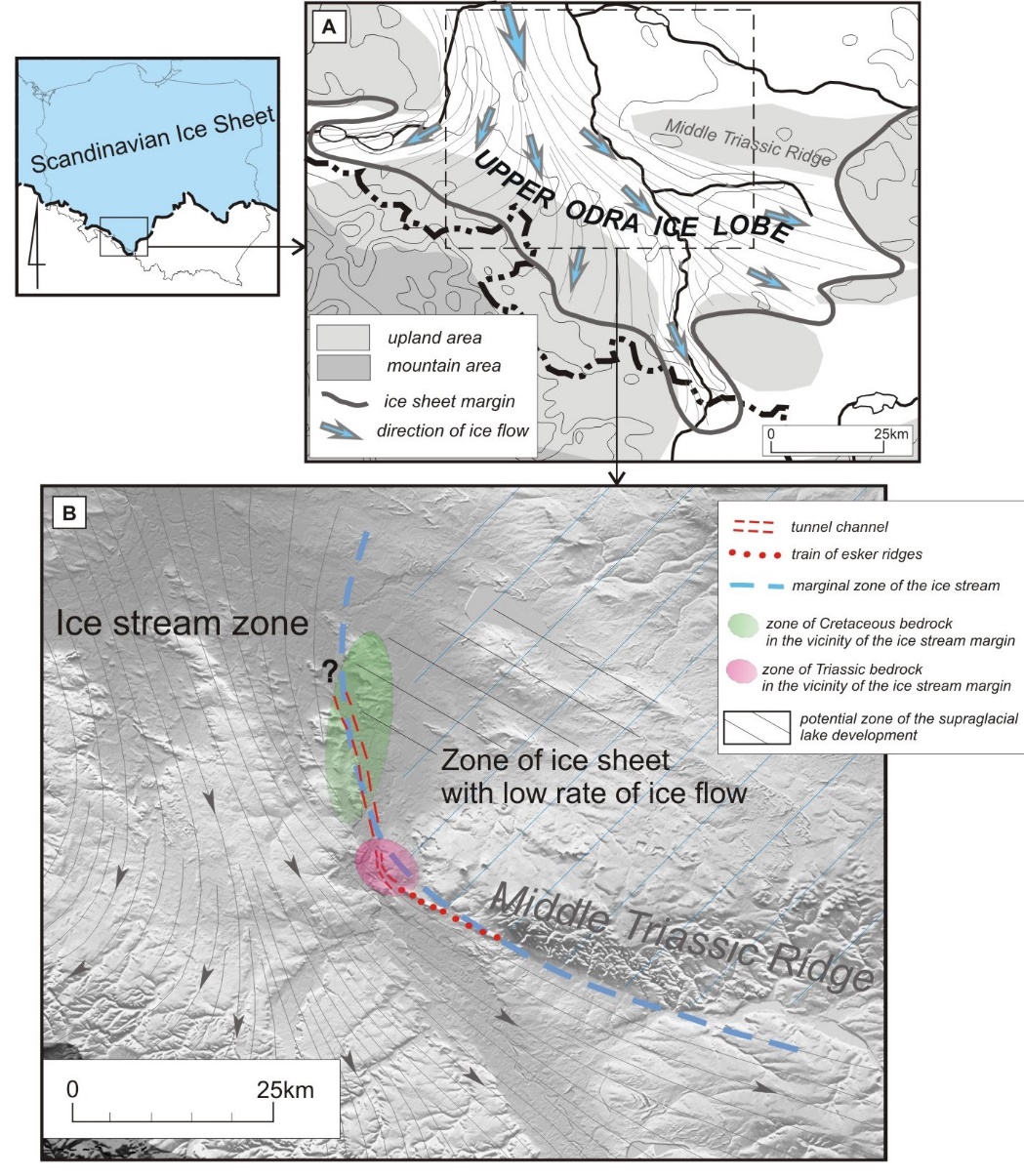Dr hab. Tomasz Salamon and dr Maciej Mendecki documented a subglacial drainage system developed in the base of the Scandinavian Ice Sheet at the border of the Silesian Lowland and Silesian Upland as a result of large outburst flood events. A spatially complex structure characterized this drainage system, i.e., it was composed of an individual tunnel channel incised in Mesozoic rocks and large esker ridges. The studied forms are unique within the entire southern sector of the Scandinavian Ice Sheet, which, in Central Europe, advanced mainly over soft unconsolidated sediments. The drainage system location and orientation did not result directly from water pressure gradients but was strongly determined by the internal structure of the ice sheet, i.e., it presumably developed along the marginal part of the ice stream supplying the Upper Odra ice lobe, which represented distinct weaknesses within the ice sheet. The drainage system’s development was the effect of the drainage of meltwater stored in the ice sheet system, most probably as a supraglacial lake. The research has been published in Geomorphology.
Tomasz Salamon, Maciej Mendecki. 2021. A rare signature of subglacial outburst floods developed along structural ice weaknesses in the southern sector of the Scandinavian Ice Sheet during the Drenthian Glaciation, S Poland. Geomorphology 378, https://doi.org/10.1016/j.geomorph.2021.107593.






